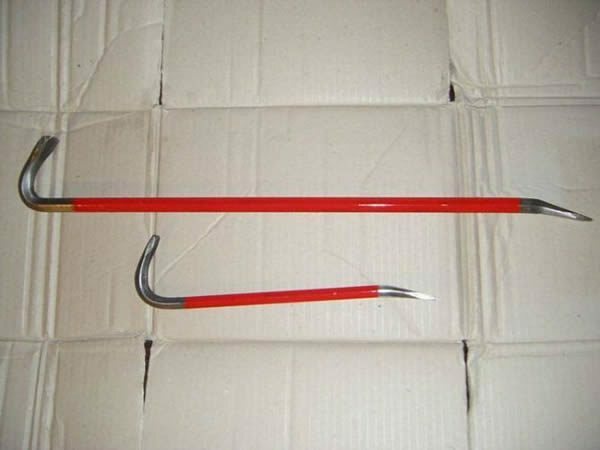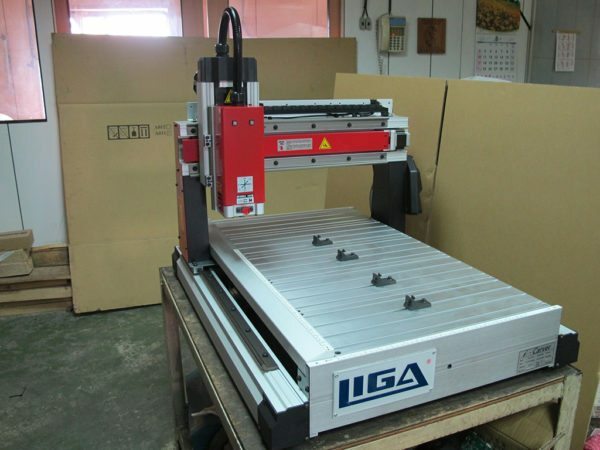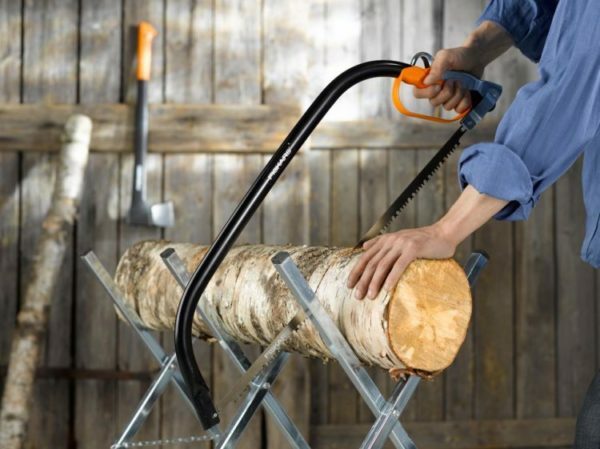stainless steel welding workshop in the home - 3 easy and affordable way
Table of contents
-
1 Why stainless poorly cooked
- 1.1 Methods of welding stainless steel
-
2 How to weld stainless steel
- 2.1 Preparation of welding equipment
- 2.2 Method 1: tungsten arc welding electrodes
- 2.3 Method 2: arc welding with coated electrodes
- 2.4 Method 3: Semi-automatic welding in argon
- 3 conclusion

For weld quality must be pre-trained on unnecessary scraps stainless steel.
You do not know how to weld stainless steel products? In fact, welding of stainless steel at home - it's not such a difficult task. I will describe several methods of welding and explain how this can be done by hand in his garage or home workshop.
Why stainless poorly cooked
Stainless steel - an alloy of iron with the usual carbon black addition and complex dopants (chromium, nickel, molybdenum, titanium, manganese, etc.). These metal additives impart good corrosion resistance and high mechanical strength.
By introducing dopants change and physical properties of stainless steel, so its welding technology has the features:
- Low thermal conductivity:
- Stainless steels have a thermal conductivity significantly lower than that of low carbon metal, so the heat from the welding zone is given worse;
- To eliminate the burn-wall, stainless steel products should be cooked with a smaller current (15-25% less than for the black metal).
- metal Shrinkage:
- Stainless steel has a higher coefficient of thermal linear expansion, so it can shrink and deform greatly after cooling;
- To reduce thermal distortion, it is necessary to leave sufficient tolerances and gaps between the article to be welded;
- For the same stainless steel cooking does not need a continuous seam, and a short piece of tack point.
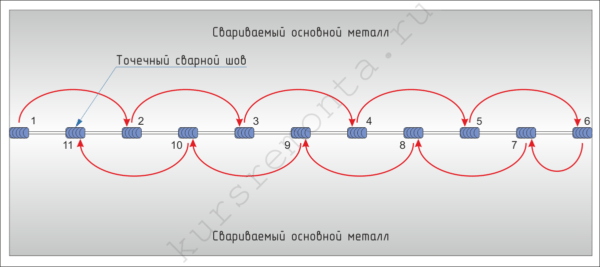
The diagram shows how the application point on the tack weld.
- High resistance to:
- Electrical resistance is substantially higher alloyed steel than the ferrous metals. This leads to an increase in temperature in the welding zone and burning the electrodes;
- Therefore, for such work uses tungsten electrodes or chromium-nickel steel, and their length should not be greater than 350 mm;
- Temperature erosion:
- At very high temperatures, atmospheric oxygen environment dopants may fade alloy;
- Because of this, corrosion resistance of stainless steel deteriorate, and eventually begins to corrode the weld;
- To protect the alloying components must limit the flow of saturated air with oxygen in a molten metal zone;
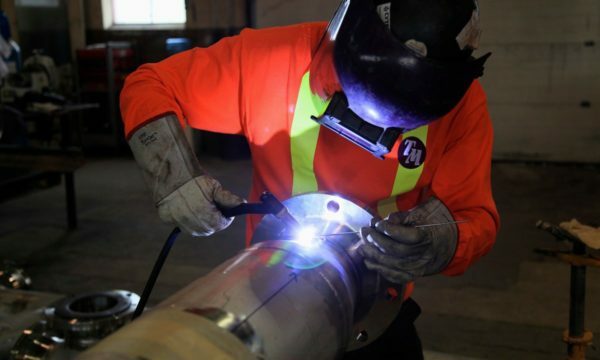
During operation, be sure to use a protective mask, otherwise you may get burned retinas.
To reduce burnout dopants, the weld after setting it is necessary to cool down as quickly as possible. Ate size allows the finished product can be immediately dipped in a bucket or tub with water.
Methods of welding stainless steel
several available methods can be used for sealing and permanent connection of stainless steel products:
- Welding, Tungsten:
- In this case, the electrode is used only for ignition of the arc;
- During operation in the molten metal zone is fed inert gas (argon) and additive stainless wire;
- Under argon-arc welding of a base metal is not overheated, so the weld quality is obtained and durable;
- The only drawback of this method - the high price of argon-arc machine.
- Welding with coated electrodes:
- For operation can use an ordinary arc welding machine, preferably of inverter type;
- From high temperature electric arc the electrode is melted and fills the weld;
- electrode coating is also melted but remains above and protects the metal from oxidation and burning in air;
- Welding of stainless steel tubes electrode is used only for thick-walled massive products.
- Welding semiautomatic:
- For operation using a conventional semi-automatic welding;
- It is installed with a coil of stainless steel wire, and to the burner instead of carbon dioxide cylinder is connected with argon balloon.
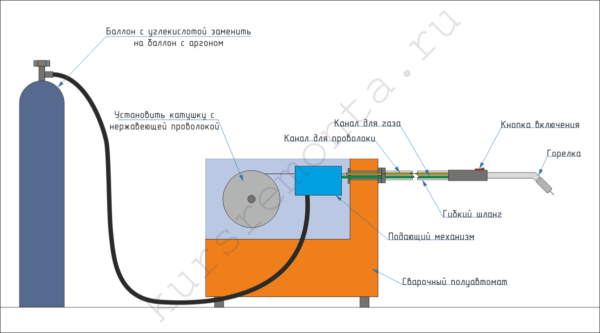
Driving conversion of semi-automatic welding of stainless steel.
To connect or repair of small thin-walled stainless steel products, can be used instead of welding or soldering brass tin-lead solder.
How to weld stainless steel
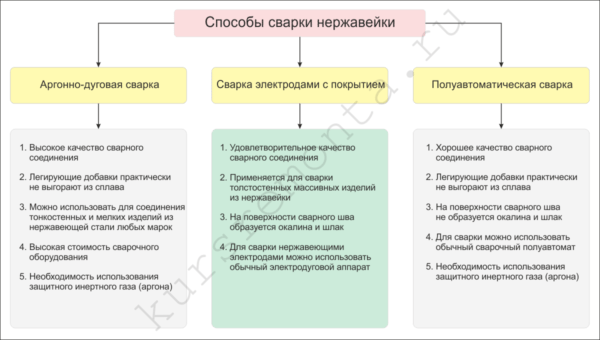
The table shows the comparative characteristics of certain methods of welding stainless steel.
Preparation of welding equipment
To cook products of stainless steel with their hands, need a small metal workshop and one of the sets of welding equipment:
| Illustration | Welding equipment |
 |
Argon arc welding:
|
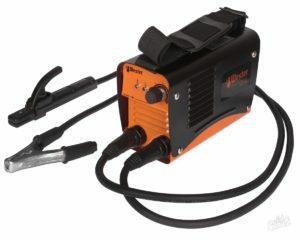 |
Welding electrodes:
|
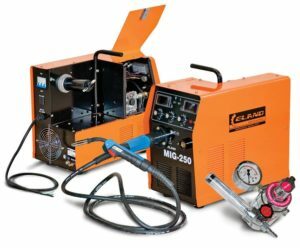 |
Semiautomatic:
|
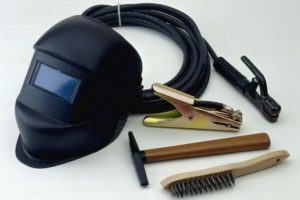 |
Auxiliary tools and equipment:
|
Method 1: tungsten arc welding electrodes
| Illustration | Description of work |
 |
Preparing the Machine:
|
 |
Welding under argon:
To reduce the burning of the electrode, it is necessary to hold down the burner 5-10 seconds after the arc is extinguished. |
Method 2: arc welding with coated electrodes
| Illustration | Description of work |
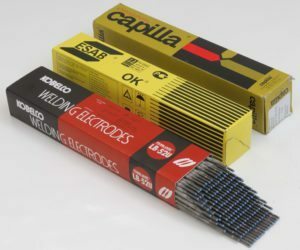 |
Preparation of electrodes:
|
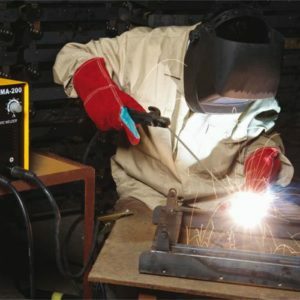 |
Welding of stainless steel electrodes:
|
Method 3: Semi-automatic welding in argon
| Illustration | Description of work |
 |
Preparation of semi-automatic:
|
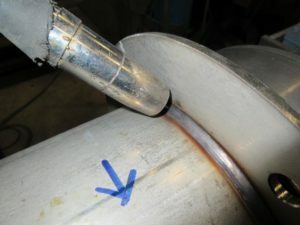 |
Welding stainless steel semi-automatic:
After semiautomatic welding slag is formed, so it is not required obbivat. |
conclusion
You are able to make sure that the welding of stainless steel is available for any handyman, even without the use of special equipment. If you have any questions, leave them in the comments, and do not forget to watch the video in this article.
